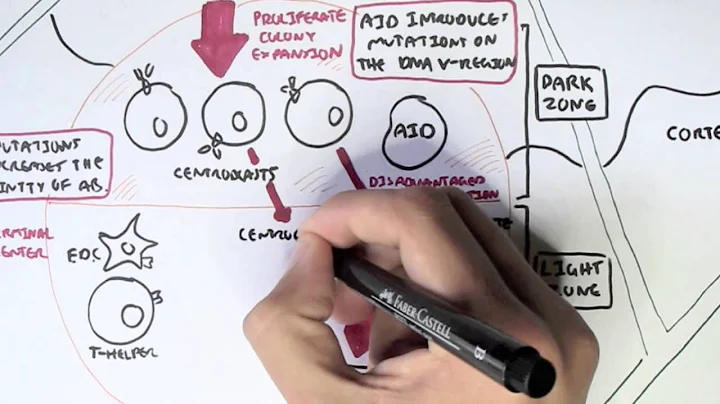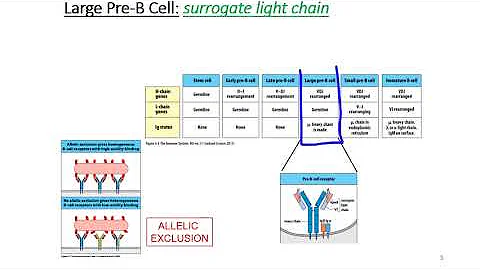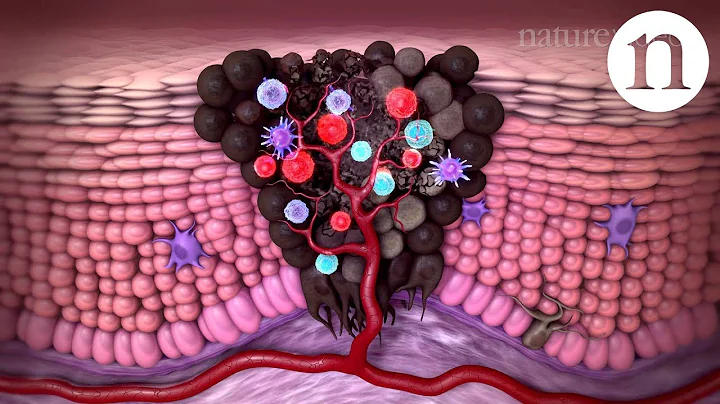▉ Introduction
Welcome to the 11th issue of Everyone Learns to Understand Immunology. In the last issue, we talked about that the complete BCRs actually include the Hc and Lc parts that can recognize antigens outside the cell but cannot transmit signals, and the Igα and Igβ proteins that can only transmit signals but have no knowledge of the outside of the cells. The cross-linking of BCR is the key to activation and signal transmission in B cells. Enough Igα and Igβ proteins gather together to start the signal cascade reaction. For an opsonized antigen, there are two receptors on B cells that can bind to it - BCRs that recognize specific epitopes on the antigen and complement receptors that recognize modified components on the antigen. After understanding the way B cells transmit signals, we know that in order to produce antibodies and exert a more powerful immune function, B cells must first be activated. In this issue, we will talk about how the body activates of B cells.

▉ Activation of B cells
Most B cells in our body have never encountered their cognate antigens. These B cells are colloquially called naive B cells (navie B cells), which are not stimulated by antigens. B cells. For example, a B cell that recognizes a certain virus may never have the opportunity to be exposed to that virus). In contrast, B cells that have already encountered their cognate antigen are what we colloquially refer to as "experienced B cells." Both of the above-mentioned cells need to be activated to exert certain immunological functions, but the methods of activating these two B cells are somewhat different. Here we introduce the activation method of initial B cells.
Initial B cells can be activated in two ways, one is completely dependent on the help of Th cells (T cell-dependent activation) , and one is basically independent of the help of T cells (T cell-independent activation) .

▉ T-cell dependent activation (T-cell dependent activation)
initial activation B cell requires two signals and . The first signal is provided by the clustering of BCRs with associated signaling molecules. However, the first signal is not sufficient to activate B cells, so a second signal is required. Immunologists call it the costimulatory signal , which is usually Provided by helper T cells (helper T cells, Th cells), we call it T cell-dependent activation. The most well-studied co-stimulatory signal currently is the direct contact of B cells and Th cells. There is CD40L on the surface of activated Th cells and CD40 on the surface of B cells. When CD40L combines with the CD4 protein complex on the surface of B cells and BCRs have been cross-linked, the B cells are activated and begin to transmit stimulating signals.
protein complex on the surface of B cells and BCRs have been cross-linked, the B cells are activated and begin to transmit stimulating signals.
The interaction between CD40 and CD40L is important for B cell activation, and if either of the genes encoding these two proteins is genetically defective, humans are unable to generate T cell-dependent antibody responses.

▉ T-cell independent activation
For some specific antigens, initial B cells can be activated with little or no help from T cells. This activation mode is different from the above The T cell-dependent activation mentioned is called T cell-independent activation. These antigens of often have repetitive epitopes that can cross-link a large number of BCRs. In fact, clustering of a large number of B cell receptors can partially replace the costimulatory effect of CD40L. (For example, sugar molecules found on the surface of many bacteria are made up of multiple repeating units, much like a chain of beads strung together. If each bead is thought of as an epitope recognized by BCRs, then is a long chain of beads. It is possible to cluster many BCRs together, and the cross-linking of such large-scale BCRs can replace the costimulation effect of CD40L and directly initiate the activation of B cells . Of course, this activation is antigen-specific . Only those B cells with receptors that recognize the repeated epitope can be activated.)

However, to fully activate B cells and produce antibodies, the naïve B cells need to receive a second signal. For B cells activated in a T cell-dependent activation mode, the second signal is the co-stimulatory signal (such as the direct effect of CD40 and CD40L), while for for T cell-independent activation mode, the second signal The signal is a clear "danger signal" - a clear sign of attack in . In addition to expressing BCRs, B cells also express Toll-like receptors (TLRs). TLRs can provide "danger signals" to B cells (for example, BCRs can recognize molecules with a large number of repeated epitopes, such as the body's own DNA molecule , but fortunately, our body does not produce anti-DNA antibodies , because the immune system is not fighting DNA, so there is no "danger signal" to provide the necessary stimulus signal ; give another example For example, the innate immune system in the body is fighting invading bacteria. BCRs are able to recognize epitopes on the bacterial surface and produce antibodies. This is because B cells receive the "danger signal from the battlefield", which is B Full activation of the cell provides the second signal ).
Of course, like the T cell-dependent activation method, the T cell-independent activation method is also antigen-specific - only those B cells with receptors that recognize the repeated epitope can be activated.

The advantage of T cell-independent activation is that B cells do not need to wait for activation of Th cells, but can directly join the war, thus producing antibody responses faster. In addition, Th cells only recognize and activate the polypeptide presented by MHC II. If the activation of B cells must rely on Th cells, then the entire adaptive immune system can only deal with protein-based foreign invading substances (this is very scary, This means that the adaptive immune system will not be able to deal with a large number of invaders ! Because common invaders have sugars or lipids on their surfaces, and human cells do not have these substances on their surfaces, sugars are well recognized by the immune system. Target). Therefore, Mother Nature designed a T-cell-independent activation method that allows B cells to be successfully activated without the help of Th cells, thus increasing the range of antigens that the adaptive immune system can deal with (not only Including proteins, but also sugars and lipids!)

▉ The logic of B cell activation
Readers may have questions after reading this: Why does the activation of B cells require two signals? If B cells could be activated directly by cross-linking BCRs, wouldn't things become faster and simpler? Of course, yes, this can accelerate the production of antibodies, but this is very dangerous! As we mentioned in previous issues, one B cell can only produce one type of BCR. There are B cells with different BCRs in the body. Since there are many kinds of B cells in the body, they can recognize a large number of substances, including Our body’s own proteins and other substances. Most B cells that can recognize their own material molecules are eliminated in the bone marrow (will be introduced in a later post), but this screening process is not 100% effective. If these B cells that can recognize their own material molecules are not eliminated at the beginning, If eliminated, autoantibodies will be produced, leading to autoimmune diseases. Therefore, to prevent this possibility, the body adopts a protective mechanism that activates B cells only in situations of real danger (this is where the second signal comes from!) : For T cell-dependent activation In terms of the method, both B cells and Th cells must think that there is danger before the B cell can receive the second signal; for the T cell-independent activation method, the second signal is a clear signal of invasion .

▉ Summary
In this issue, we introduced how B cells are activated. There are two ways in which B cells are activated, namely T cell-dependent activation of and T-cell-independent activation of . These two different activation methods require two signals, and . In addition to the cross-linking of BCRs and antigenic epitopes that can provide a signal, the second signal for T cell-dependent activation is a costimulatory signal (often composed of CD40 and CD40L). Provided by direct binding), the second signal of T cell-independent activation is a clear danger signal.
Reference:
Reference book: "How the immune system works"
Note: Pictures come from reference books and the Internet. Articles are only used to convey knowledge.
Welcome to follow the WeChat public account (Dr. Zhao Guixian: cactus20150101) and video account (Dr. Zhao from the Department of Neurology) to get more popular science knowledge.
Video account: Dr. Zhao from the Department of Neurology
WeChat public account: Dr. Zhao Guixian: cactus20150101





















